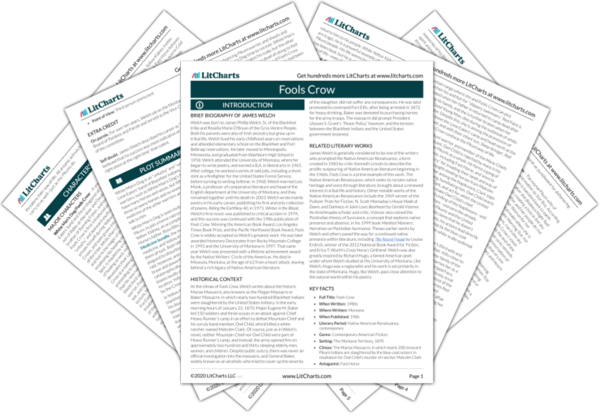This is perhaps the most disturbing of the images. Here, Fools Crow sees one of many Indian boarding schools where Blackfeet children are turned into Napikwans. The fencing and barbed-wire represents their relative imprisonment, and the native children stand away from the white children because they are treated as outsiders. Their distance from the white children represents their continued marginalization within society.
